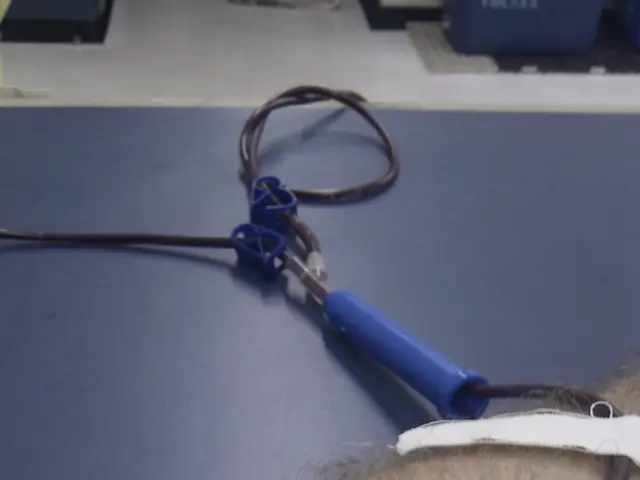Possible skin manifestations associated with hepatitis C?
Chronic Hepatitis C, a viral infection that affects the liver, can have far-reaching effects on the body, including the skin. This article aims to shed light on the various skin issues that may be associated with chronic hepatitis C infection.
One common skin manifestation is Lichen Planus, a cutaneous extrahepatic manifestation that presents as patchy or scaly bumps with a reddish-purple appearance and sometimes white areas. Another skin condition linked to hepatitis C is Porphyria Cutanea Tarda, characterised by blistering on sun-exposed areas.
Hepatitis C may also cause inflammatory and immune-related skin conditions such as Cryoglobulinemia, a rare condition that can affect the large and small blood vessels, causing inflammation, skin rashes, and pain. Polyarteritis Nodosa, a type of vasculitis, can involve the skin with nodules or ulcers. Leucocytoclastic Vasculitis, a small vessel inflammation, may present with palpable purpura on the skin.
Urticaria, or hives, are itchy, raised skin lesions that may last for a few hours at a time. They are also a possible skin issue associated with hepatitis C. Jaundice, the yellowing of the skin and eyes due to liver dysfunction, is another symptom linked to the disease. Chronic itching, or Pruritus, is a common and distressing symptom in hepatitis C patients.
It is essential to note that these skin manifestations are often related to the systemic effects of the virus and associated immune complex deposition or liver impairment. Some skin symptoms like jaundice and pruritus are linked directly to liver dysfunction caused by chronic infection, while others like lichen planus and vasculitis represent immune-mediated extrahepatic effects.
In severe cases of hyperbilirubinemia with jaundice, a person may require a plasma exchange transfusion. Spider veins, dark, discolored patches of skin, extremely dry or red skin, severe itching specifically in one area, swollen abdominal cavity full of fluid, and edema, or swelling in the lower limbs from fluid buildup, are signs of liver damage due to chronic hepatitis C.
It is never a good idea to self-diagnose a skin rash. Anyone experiencing a persistent rash should consider seeing a doctor for a diagnosis. If a rash develops due to a specific medication, doctors may recommend switching treatments.
In conclusion, chronic hepatitis C can lead to a range of dermatological issues, from inflammatory and immune-related skin conditions to symptoms caused by liver damage. It is crucial to seek medical advice if you suspect you may have hepatitis C or are experiencing any unusual skin changes.
- The inflammatory and immune-related skin condition, Cryoglobulinemia, is another potential skin issue associated with chronic hepatitis C infection, characterized by inflammation, skin rashes, and pain.
- Urticaria, or hives, can also be a possible skin issue linked to hepatitis C infection, as they are itchy, raised skin lesions that may last for a few hours at a time.
- Chronic itching, or Pruritus, is another distressing symptom in hepatitis C patients, often related to the systemic effects of the virus and associated liver impairment.
- In cases of serious liver damage due to chronic hepatitis C, signs may include spider veins, dark, discolored patches of skin, extremely dry or red skin, severe itching specifically in one area, swollen abdominal cavity full of fluid, and edema, or swelling in the lower limbs from fluid buildup.
- Anyone experiencing a persistent rash or any unusual skin changes should consider seeking medical advice, as it is essential to get a proper diagnosis from a healthcare professional, especially if hepatitis C or other chronic diseases such as chronic hepatitis C are suspected.




